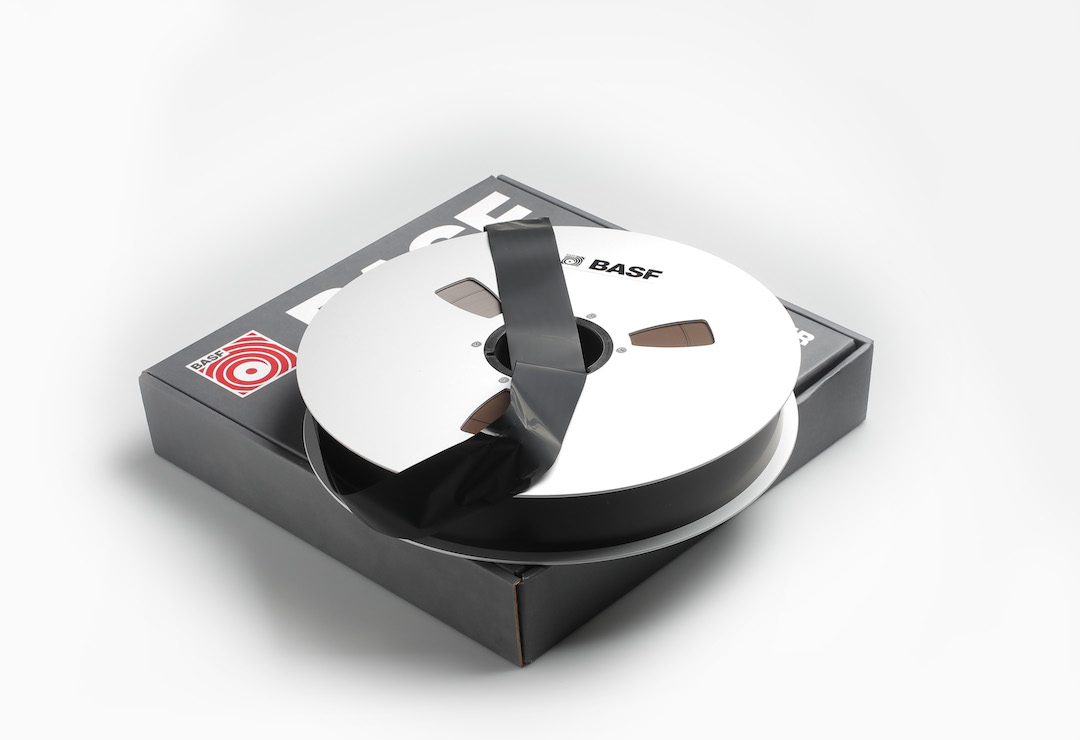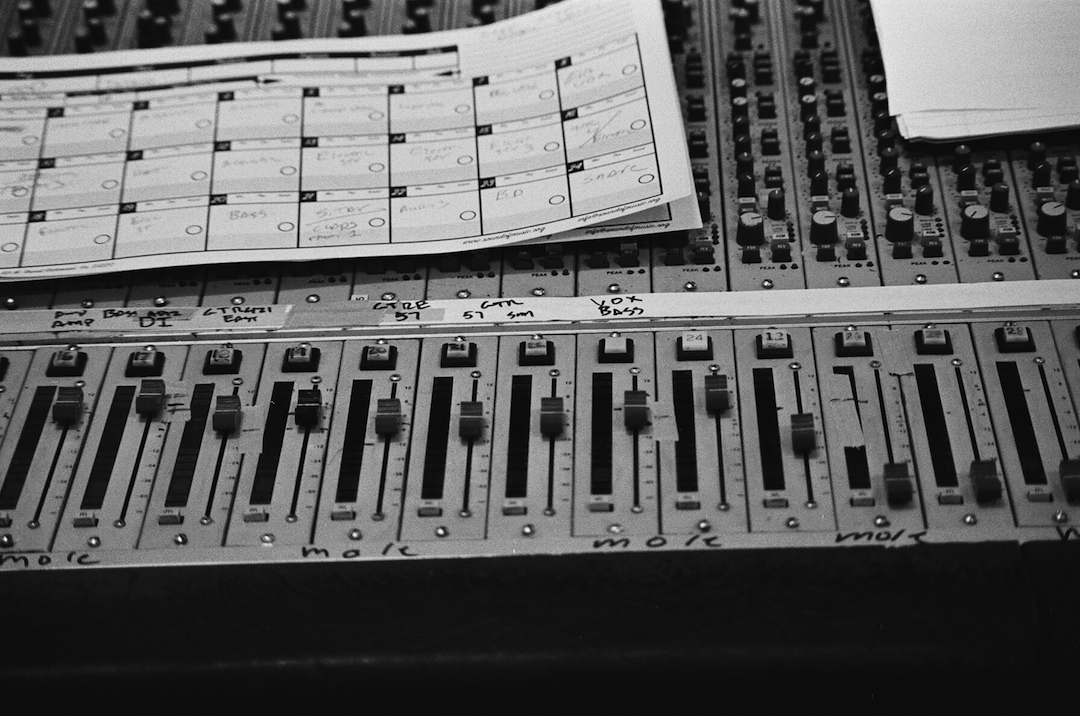Op Ed: Analog Tape and Why I Miss It
After my most recent post, “Analog Tape and Why I Don’t Miss It”, was published here last week, I felt it was only fair to add some balance by speaking out about the favorable qualities of this rust-covered wonder.
For the first 15 years of my recording career, I used mostly analog tape, and in multiple formats, too—From 1/4″ 2-track at 15 ips to 2″ 24-track at 30 ips, and nearly everything in between.
Those of us who have used tape professionally know that each tape width, speed, formulation, format, comes with its own considerations. (Not to mention all the various reference levels, EQ curves and bias settings associated with each.)
In order to use tape, you had to know something about tape, about tape machines, and how they work. It also helped to possess some elementary knowledge about electronics so you could make sensible choices.
If you had all this knowledge and applied it, then you probably ended up with good-sounding tracks with an acceptably low noise floor, and little to no distortion. If you didn’t, you could barely even get started.
This is a very different skill set and level of understanding than what a modern recording engineer must possess.
Tape Takes Commitment
I don’t want this observation to come off as elitist or condescending because clearly, many of my current peers know much more about computers, plugins, and advanced editing than I may never know. I’m okay with that. I know my strengths and weaknesses when it comes to recording, and work with them in mind.
Modern recording presents its own challenges: It requires that we deal with many more tracks, many more effects and types of processing, and in some ways, higher expectations than in the past.
It’s certainly no cakewalk for those working at the high end of today’s recording business, where the track counts can be astronomical, and where the clients expect total control, infinite revisions, and to never hear the words “Sorry, I can’t do that”!
But when tape was king, there was no “faking” it. If you didn’t understand the concepts of tape speed, reference level, or the difference between sync or repro, you would never even be able to get something recorded or played back.
With a computer and some basic software like Garageband, almost anyone can open up a session, drag in an instrument track, make some noise, and *poof*, they’re recording. The same goes for digital editing: You can give something a try and if you don’t like it, just hit “undo”, and all is forgiven. No crisis.
Analog tape, on the other hand, forced you into making the decision early on over whether or not you were really going to pursue recording seriously, or leave it to someone else. You had to begin researching the inner workings and minutiae of optimizing the tape machine to work with your selected tape type just get good performance out of it.
Analog tape had a way of vetting those who wanted to be recording engineers early on in the process. If you weren’t up to learning about how to use it, then you probably weren’t up to the other technical tasks that were—and still are—required to be a truly competent recording engineer.
I can remember my first sessions in a real recording studio in 1987. I would stare at the patchbay and tape machines with no understanding or confidence about what I was looking at or what I was trying to do. It was daunting. And to make matters worse, it was a smaller studio with no experienced staffer above me to guide me towards a solution.
I knew engineers who knew plenty more than I did and who taught me a great deal, but none of them worked at that studio. It was truly a sink or swim situation. I’m sure that if I had a way right now, to listen to any of the stuff I recorded back then, I would be mortified. It might be interesting to do, but it’s not something that I really want to explore.
The natural barrier to entry that tape provided speaks to what is possibly the biggest difference between working on tape and working in digital: With tape, you are forced to commit to things.
Freedom from Choice?
With tape, there weren’t unlimited tracks, or playlists, or undo. You had to try to get a take, hopefully without too many mistakes. While punching-in and editing were available in the analog world, even those solutions required a commitment: “Is that line really that bad? Are you sure you can do it better?” Because on analog tape, once it’s gone, it’s gone forever.
In a world where you have only 24 tracks available (which used to be considered a lot of tracks), you really have to decide what is necessary to achieve the vision. If there weren’t enough tracks available to accommodate everything to serve the goal, you needed to figure out another way to get there.
This may sound like a weakness at first, but I think commitments are a good thing, and that a lack of commitment paralyzes so many projects these days.
Many producers and musicians are happy to postpone the final decision and “keep this one, but do another” to avoid committing. I’ve seen it become more and more difficult for artists and producers to stick their neck out and say: “That’s the one! Let’s move on!”
When I am fortunate enough to record a great band, I find that the great takes tend to separate themselves from the good ones. In these situations it’s not hard to declare a “keeper”.
When the band is good, but not great, sometimes you have to choose the final take based on which one has the most good about it. (Or rather, the one that has the fewest weaknesses.) Even in this case, it helps to accept something and move on.
Every project must have a beginning and an end, and commitments force us to adhere to this principle. Analog forces your hand in a way that digital does not.
With digital, the medium doesn’t discipline you. You have to discipline yourself.
Take Note
Another wonderful side effect of using tape? Track sheets!
Unlike with digital recording where you can (and should) assign a name to every track that you record, there was no way to embed a track name directly on the tape. To keep tabs on things, you had to fill out a track sheet.
These “track sheets” were as simple as a grid of boxes arranged with a similar layout to the tape machine’s meter bridge, where you would enter all the pertinent info as you recorded each track.
Without a track sheet to guide you, the only way to identify what was on tape was to load it up, push the faders up, and listen. Without a track sheet, it was easy to get lost you’d could find yourself guessing what was on each track and whether it was even meant to be used.
Using track sheets made sure that the recording engineer was organized, engaged and concerned enough about what was being recorded to document it actively and accurately. It showed respect to the artist in the room and to whomever may work on the project after the tracking was done.
These are still good habits to keep, and tape forced you to keep them. Today, you have to force yourself.
Ears Open
Perhaps the most subjective reason to use analog tape is that it can sound really, really good.
It’s no mistake that the medium has managed to hang around despite the cost and other limitations associated with it. It has a pleasing sound on many sources and in some cases, just makes a track sound better. If this was not true, then I doubt there would be so many tape emulation plugins today.
This is not to say that tape always improves everything, because it does not. But for me, when it comes to drums, percussion and guitars, you just can’t ignore the improvement that tape makes.
If I’m recording any of these elements and there’s a tape machine available and a budget for tape, I’m in. While I don’t expect that I will ever record on tape again with any regularity, it still influences the way I work today, and I always leave the door open for a trip down memory lane.
Mike Major is a Mixer/Producer/Recording and Mastering engineer from Dunedin, FL. He has worked with At The Drive-In, Coheed and Cambria, Sparta, Gone is Gone, As Tall as Lions, and hundreds of other artists over the last 30 years.
Major is the author of the book Recording Drums: The Complete Guide.
Please note: When you buy products through links on this page, we may earn an affiliate commission.









Mike Levine
January 5, 2017 at 10:02 am (8 years ago)testing…